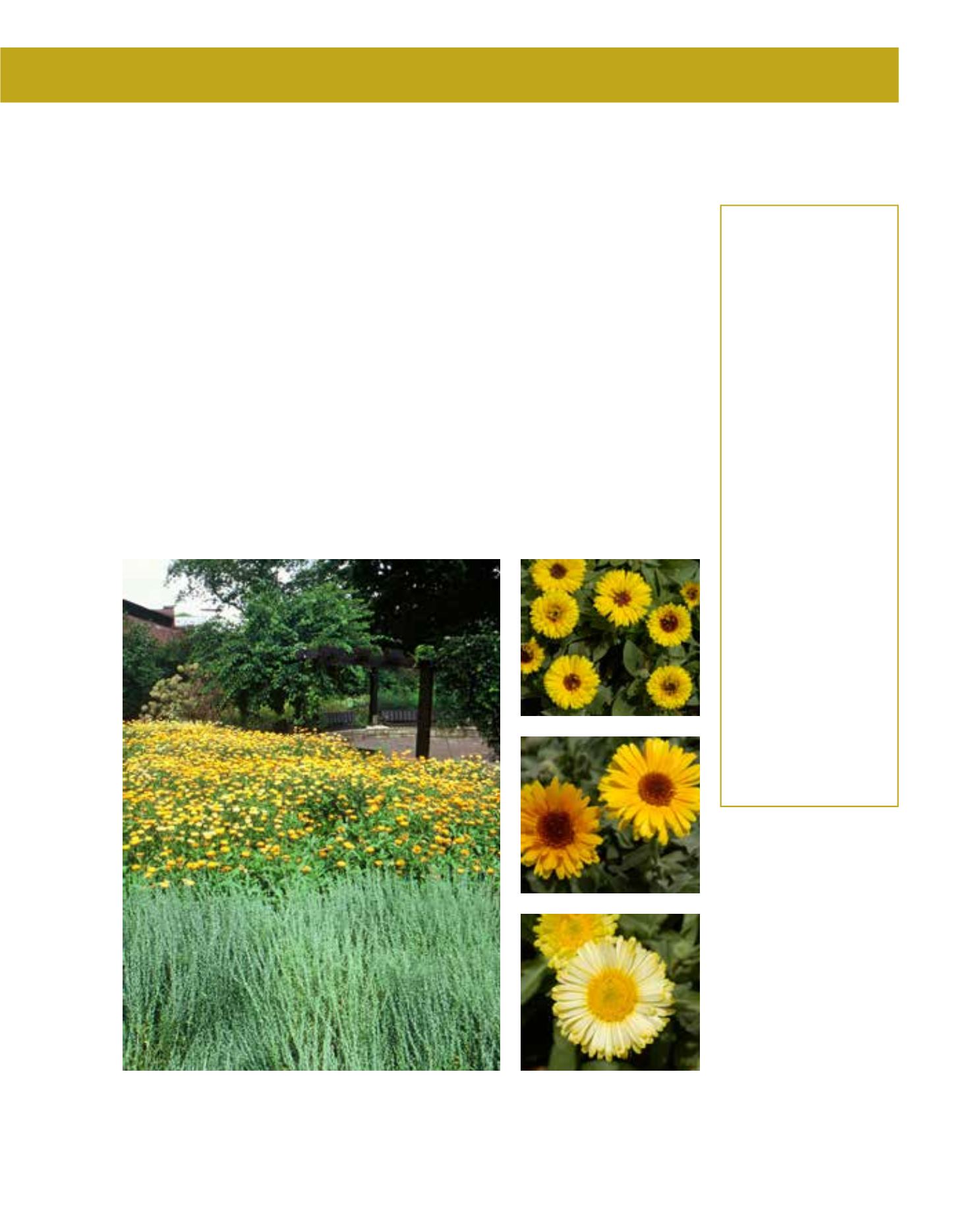

GENERAL
Origin
:
Mediterranean
Vigour
:
fairly fast
growing
Humidity
:
very arid, semi-
arid, semi-humid,
very humid,
extremely humid
Propagation :
direct sowing,
sowing and
pricking out
Maintenance :
high
CONDITIONS
Urban climate :
resistant
Dessication :
vulnerable
Stagnant water :
vulnerable
Irrigation
:
medium
Salinity/ppm :
low (1000 ppm)
Hardiness
:
-3°C
SHAPE
Type
:
annual
Height
:
0.3 m-0.6 m
Spread
:
0.5 m-1 m
Foliage
:
evergreen
FLOWER
Colour
:
yellow, orange,
brown, red
Size
:
4 cm - 7 cm
Period
:
April - November
Smell
:
aroma, strong,
pleasantly
scented, leaf
FRUIT
Type of fruit :
achene
Fruit size
:
2 cm - 5 cm
Toxicity
:
edible
Marigolds, which have their origin in the Mediterranean, are easy-to-grow hardy annuals, which
seed very readily and once grown are even difficult to eradicate, appearing year after year in the
same spot. In Arriyadh, they make a popular garden plant, and have often been used for winter
colour on roadsides. A bushy plant with bright-green leaves, which are oblong, fleshy and have
a spicy fragrance, they grow from 30 to 60 cm high and bear showy, daisy-like flowers up to 7
cm across, usually yellow or orange, often double. Propagated by seed, they are tolerant of poor
soil, as long as it is moist but well-drained. Planted in full sun, they need regular watering until
established, and are best when given only little water after that. In the summer, they will become
scorched by the sun and need renewing for a winter display: it must be said that they are not par-
ticularly hardy to frosts. Prone to attacks by aphids, occasional deadheading will improve their
appearance in the garden. Apart from their landscape value as a pot plant, in gardens and winter
colour in public spaces, they have no great landscape value.
76
Calendula officinalis,
Asteraceae
Aklelmulk,
Marigold
















